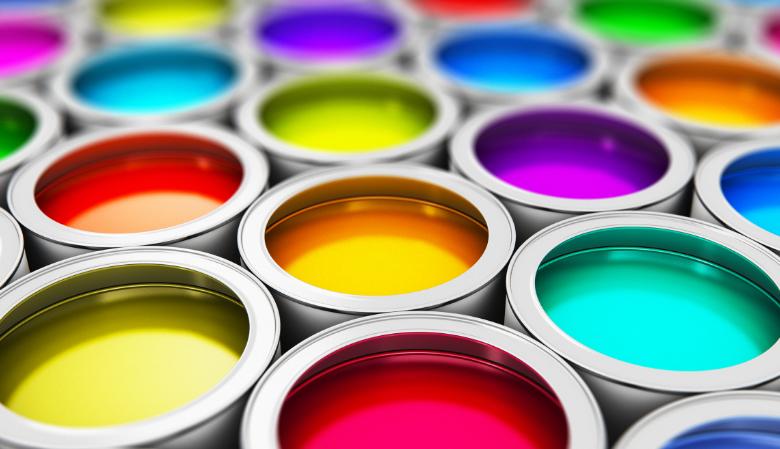The Australian Paints Market: Trends and Future Outlook

The Australian paints market, valued at AUD 2.50 billion in 2023, is experiencing steady growth, driven by the expansion of infrastructure, residential projects, and an increasing demand for decorative and protective coatings. The market is expected to grow at a compound annual growth rate (CAGR) of 2.20% from 2024 to 2032, potentially reaching AUD 3.04 billion by 2032. This growth is primarily attributed to the ongoing development of new construction projects, rising demand for environmentally friendly paint products, and the increasing focus on product performance and durability.
In this article, we will explore the key factors driving the expansion of the Australian paints market, the evolving trends, and the future outlook of this vital industry.
Understanding the Australian Paints Market
The Australian paints market includes a wide range of products, including decorative paints, protective coatings, and industrial finishes. These products are used in various applications, ranging from residential and commercial buildings to automotive and industrial sectors. Paint products are crucial for enhancing the aesthetic appeal, providing protection against weathering, corrosion, and wear, and ensuring durability in different environmental conditions.
With a growing emphasis on sustainability, performance, and aesthetic appeal, the market for paints and coatings in Australia has witnessed significant changes in recent years. The demand for high-performance and eco-friendly coatings has risen, while technological innovations in paint formulation have allowed manufacturers to meet stringent quality and safety standards.
Key Drivers of Growth in the Australian Paints Market
Several factors are contributing to the continued growth of the Australian paints market. Let’s take a closer look at the key drivers:
- Booming Infrastructure and Residential Construction
The ongoing expansion of infrastructure and residential projects in Australia plays a critical role in driving the paints market. The government’s focus on urban development, public transportation systems, and road infrastructure projects has led to a consistent demand for protective and decorative coatings. New housing projects, commercial buildings, and renovation activities also contribute to the rise in paint consumption. As construction and renovation activities continue to increase, the demand for paints and coatings in both residential and commercial applications is expected to remain strong.
- Demand for Decorative Paints in Residential and Commercial Buildings
The demand for decorative paints is steadily rising, driven by the growing interest in home renovations, interior design, and enhancing the aesthetic appeal of residential and commercial properties. Consumers are increasingly looking for innovative and creative paint solutions to enhance their living spaces and businesses, making decorative paints an essential component in the market.
The popularity of trends such as neutral tones, minimalistic designs, and eco-friendly options is influencing consumer preferences. As more Australians invest in their homes and businesses, decorative paints, including interior and exterior finishes, will continue to witness growth.
- Technological Advancements and High-Performance Coatings
Another significant factor driving the growth of the paints market is the development of high-performance coatings. Paint manufacturers are constantly innovating to develop paints that offer improved durability, longevity, and resistance to environmental factors such as UV radiation, humidity, and extreme temperatures.
High-performance coatings are increasingly used in both residential and industrial applications due to their superior protection against weathering, corrosion, and staining. These coatings help extend the life of buildings and structures, reducing maintenance costs and improving long-term durability. As these products continue to evolve, the market is expected to see an uptick in demand for high-performance, long-lasting paints.
- Growing Preference for Eco-Friendly and Low-VOC Paints
Sustainability is a key focus in the Australian paints market. As consumer awareness of environmental issues increases, there is a growing preference for eco-friendly and low-VOC (volatile organic compound) paints. These paints are designed to be safer for both human health and the environment, offering reduced emissions and better indoor air quality.
Manufacturers are responding to this demand by developing paints that meet environmental standards while offering high performance and aesthetic appeal. With government regulations on VOC emissions becoming stricter, the demand for eco-friendly paints is expected to continue to rise, contributing to the overall growth of the market.
- Stringent Quality and Safety Standards
Stringent product quality and safety standards are helping shape the development of paints and coatings in Australia. Regulatory requirements ensure that paint products meet the highest standards for durability, safety, and performance. The Australian market is highly regulated to ensure that products are safe for use in homes, commercial buildings, and industrial settings.
As manufacturers continue to innovate and develop more durable, safe, and efficient products, the demand for high-quality paints and coatings is expected to increase. The ongoing focus on product performance, safety, and sustainability will likely lead to the growth of premium and specialized paint products in the market.
Emerging Trends in the Australian Paints Market
- Sustainability and Eco-Friendly Coatings
Sustainability remains a significant trend in the global and Australian paints market. With rising concerns about environmental impact, the demand for eco-friendly paints, including low-VOC and zero-VOC options, has been on the rise. Paint manufacturers are increasingly adopting green practices, using natural ingredients and sustainable production processes to create environmentally friendly products.
In addition to low-VOC paints, products such as water-based paints and energy-efficient coatings are becoming popular due to their reduced environmental footprint. Consumers are now more conscious of the environmental impact of their purchases, further driving the demand for sustainable coatings.
- Smart Paints and Innovative Technologies
Another exciting trend in the Australian paints market is the development of smart paints and innovative technologies. These paints feature properties such as heat regulation, self-cleaning, and antimicrobial capabilities. Smart paints are gaining popularity for their potential applications in both residential and commercial settings, offering enhanced functionality and convenience.
Technological advancements in paint formulations have also led to the development of paints with better coverage, faster drying times, and enhanced durability. These innovations help meet the growing demand for high-performance coatings that offer long-term protection and aesthetic appeal.
- Rise of Digital Solutions for Paint Selection
The increasing use of digital tools and technologies is transforming the way consumers choose paint for their homes and businesses. Online platforms, virtual color visualizers, and mobile apps allow customers to explore different paint options and visualize how colors and finishes will look in their spaces before making a purchase.
These digital solutions are improving the customer experience, making it easier for consumers to select the right paint for their needs. The rise of digital solutions is likely to continue as consumers seek more convenience and personalization when it comes to purchasing paints and coatings.
Challenges Facing the Australian Paints Market
- Fluctuating Raw Material Prices
The prices of raw materials used in paint production, such as pigments, resins, and solvents, can fluctuate due to global supply chain disruptions, trade tariffs, and raw material shortages. These fluctuations may lead to price increases for consumers and affect the profitability of paint manufacturers. Manufacturers must find ways to mitigate these costs through strategic sourcing and production efficiency to maintain competitive prices.
- Competition from Alternative Coating Solutions
While traditional paints remain the dominant choice in the Australian market, alternative coating solutions such as coatings based on newer technologies and other materials like wallpapers or cladding are gaining traction. These alternative products could pose a challenge to the growth of traditional paint products as consumers explore more versatile and long-lasting solutions.
- Environmental Regulations and Compliance
As environmental regulations become more stringent, paint manufacturers must ensure that their products meet the evolving standards for VOC emissions, recyclability, and sustainability. This can lead to increased production costs, which may impact pricing strategies and product availability in the market.
Future Outlook for the Australian Paints Market
The Australian paints market is set to continue its steady growth, with a projected CAGR of 2.20% from 2024 to 2032. The increasing demand for decorative and protective coatings in infrastructure, residential, and commercial construction projects will remain a key driver of market expansion. Additionally, technological advancements and the growing preference for sustainable and high-performance coatings will continue to shape the market.
While challenges such as fluctuating raw material prices and competition from alternative coating solutions remain, the market is expected to remain resilient, driven by strong demand from the construction, renovation, and industrial sectors. The emphasis on product quality, safety, and sustainability will drive innovations and attract consumers seeking long-lasting, eco-friendly, and functional coatings.




